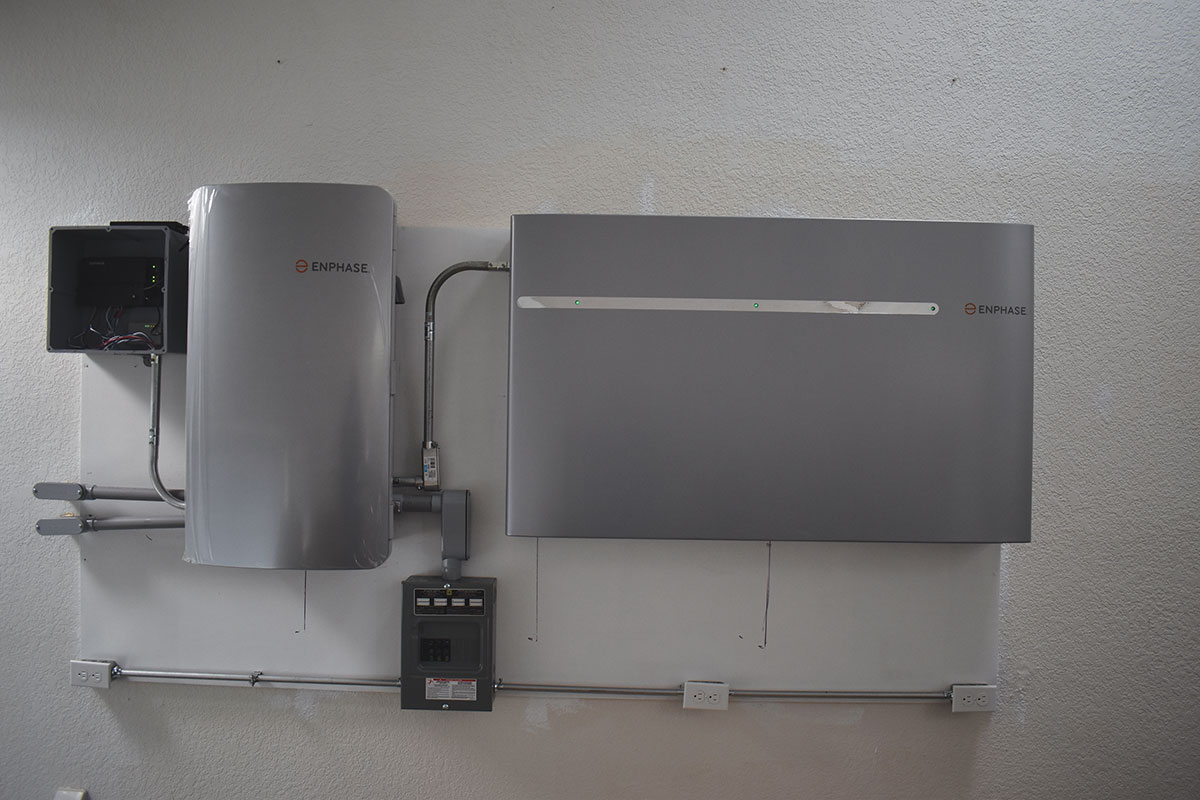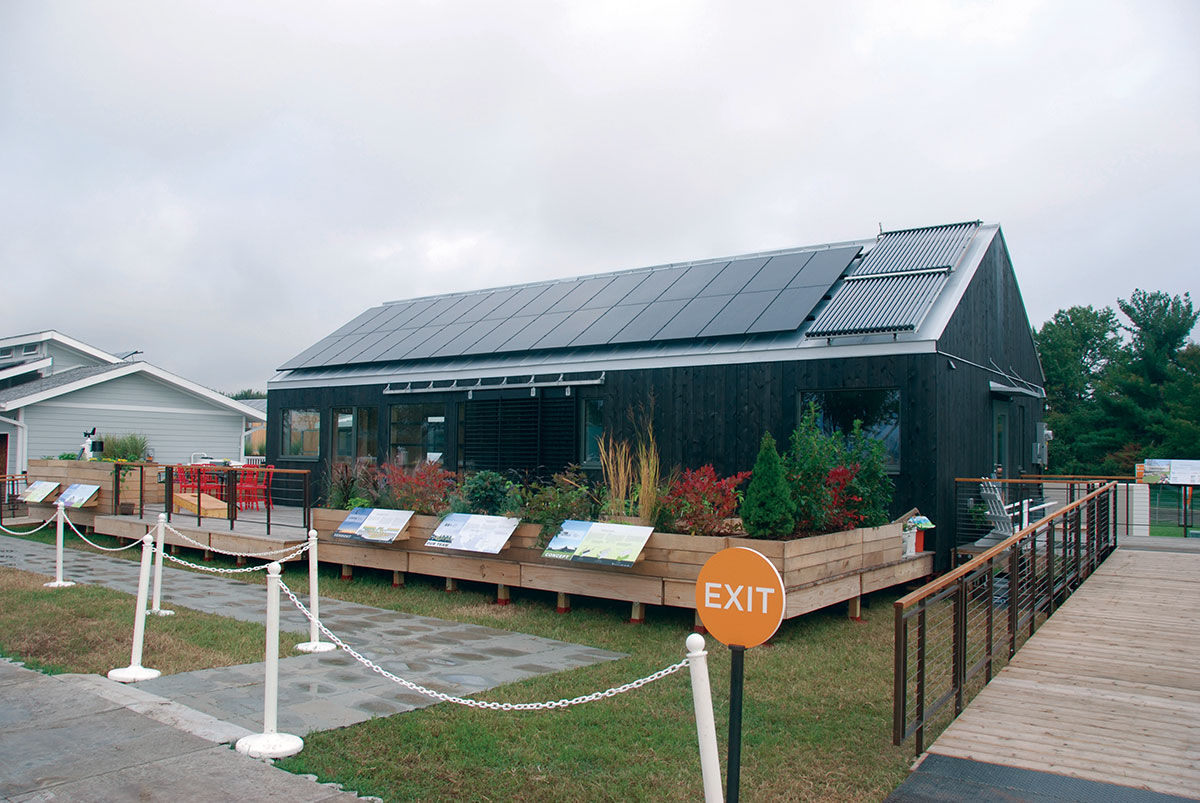Fundamentals
Grounding
Electrical systems can be thought of as those parts of an electrical installation that normally conduct electricity. On the other hand, electrical equipment are those parts of an electrical installation that enclose, isolate, and protect the electrical system. Therefore, electrical equipment can be thought of as those parts of an electrical installation that do not normally conduct electricity. Whereas all electrical equipment is required to be grounded, per 250.4(A)(2) of the 2020 National Electrical Code (NEC), only some electrical systems are required to be grounded. See 250.20 through 250.26. The NEC defines grounding as “Connecting to ground or to a conductive body that extends the ground connection.” This means that whatever is grounded is brought to the same voltage potential as the Earth, which is zero volts by international agreement.
When an electrical system is grounded, one of its electrical conductors is intentionally connected to ground through the main bonding jumper. See the definition of “Main Bonding Jumper” in Article 100. System grounding is usually done at the service or at the first disconnecting means in a separately derived system. Grounding a system limits the voltage potential to ground on the grounded conductor, that may come from contact with higher-voltage lines, lightning strikes, and the like, per 250.4(A)(1). It also stabilizes the voltage potential to ground on the ungrounded conductors of the system.
Bonding
All normally non-current-carrying metal parts of electrical equipment are required to be bonded together, per 250.4(A)(3) and (B)(2). The purpose of bonding is to establish an effective ground-fault current path. The NEC defines bonding as “Connecting to establish electrical continuity and conductivity.” This means that whatever is bonded is brought to the same voltage potential, regardless of the magnitude of that potential. Because of this requirement, one can be reasonably assured that, when touching the metallic enclosures of two adjacent pieces of electrical equipment, one will not experience a voltage potential between them or between either of them and Earth, i.e., receive an electric shock. As stated above, when an electrical system is grounded, one of its electrical conductors is intentionally connected to ground. The system is, therefore, essentially “bonded” to ground at that point. It should be noted that, per 250.4(A)(5), the Earth is not to be considered an effective ground-fault current path. Instead, fault current seeks a path back to the source from which it came by traveling from the site of the fault, through the metallic pieces of electrical equipment that are bonded together, through the main bonding jumper, and finally, through the grounded service conductor back to the transformer.
PV Systems
The Array
A decade ago, it was common practice to bond the metal frames of PV modules by drilling and tapping a hole in the aluminum frame of each module, fastening a lay-in lug to each, and then connecting those lugs with a bare, stranded, copper conductor. Connectors that were made of incorrect materials were sometimes installed, which, owing to their relative position to copper in the galvanic series, would corrode and, eventually, fail. This violated the requirement in Section 110.14 that connectors be identified for the material of the conductor. Another problem was that the surfaces of module frames, being exposed to the elements, would, over time, develop a thin layer of aluminum oxide on their surfaces. This oxide layer was electrically insulative and compromised the conductive integrity of the module/lug connection. Lugs and wire can still be used for bonding PV modules, but the lugs are now required to be listed for the application, per 690.43(A).
In recent years, products have been developed to comply with the requirements of 690.43 by using the very frames upon which the PV modules are mounted to bond the modules. Many metallic PV racking systems are now listed to UL 2703 to support and bond PV modules. Modern practice requires only an equipment grounding conductor to be run from an array where the modules are so bonded. Where the equipment grounding conductor leaves the vicinity of the array, it is required to be run with the circuit conductors, per 690.43(C), and shall be sized per 250.122. If the equipment grounding conductor is smaller than No. 6 AWG, it is required to be protected from physical damage, per 250.120(C). At one time, the prevailing wisdom required a grounding electrode conductor to be installed from the array to its own grounding electrode or to the premises grounding electrode system. If a separate grounding electrode system for the array was installed, it was required to be bonded to the premises grounding electrode system. While a separate grounding electrode system is still permitted to be installed for a PV array, per 690.47(B), it is no longer required to be bonded to the premises grounding electrode system.
The String Inverter
In PV systems with string inverters, the equipment grounding conductor from the array terminates to the inverter’s grounding bus bar. All string inverters have a lug or set of lugs for this purpose and for extending the equipment grounding path to the main service panel. Before the advent of non-isolating inverters, the dc circuit conductors had to be kept electrically isolated from the ac circuit conductors. This was accomplished using an onboard isolation transformer that prevented the inverter’s dc input from being directly coupled to its ac output. Transformers do not allow direct current to pass from their primary windings to their secondary windings. At one time in the U.S., the dc circuits of PV arrays were required to be grounded; and the inverter provided an optimal location for doing this. To ground the dc system, one circuit conductor was connected to ground, usually through a ground-fault protective device, and then to a grounding electrode system. About a decade ago, non-isolating inverters started to become popular in the U.S., which meant that grounding dc circuits at the array began losing popularity to the more efficient method of leaving the circuits ungrounded. While ungrounded PV systems have been used in Europe for decades, it wasn’t until non-isolating inverters became popular in the U.S. that ungrounded systems began to flourish. Most of the PV systems that are now being installed in the U.S. are ungrounded. Solar PV systems are still permitted to be grounded, per 690.41(A)(1) and (5), and, for those PV systems that are, the dc grounded conductor is directly coupled (or coupled through electronic circuitry) to the ac grounded conductor, which is then brought to ground potential by being terminated to the neutral bus bar at the main service panel. When a PV system’s dc circuits reference ground in this way, it is referred to as “reference grounding,” whereas connecting an inverter’s grounded dc conductor to its grounded ac conductor, via electronic circuitry, is called “functionally grounded.” These are the hallmarks of non-isolating inverters. Therefore, a separate grounding electrode system is no longer required for either grounded or ungrounded PV systems. However, some contractors, who had been accustomed to grounding the system at the inverter, still prefer to install a grounding electrode conductor at that point. While this is permitted, per 690.47(B), it is done only for grounding the PV equipment and not for grounding the PV system.
The PV System Disconnecting Means
The output of all inverters is ac and, if the inverter is utility-interactive, then its output will be coupled to utility power at some point along the utility power’s distribution path. This point is called the “point of common coupling,” which is permitted to be located at the service conductors on the supply-side of the main service disconnecting means, per 705.11, or on the load-side, per 705.12.
There is no requirement that a PV system be bonded at its disconnecting means but, if it is bonded there, the PV system grounded conductor is required to be connected to a grounding electrode system. Simply installing an equipment grounding conductor from the disconnecting means to the point of common coupling would create a parallel grounding pathway, which is prohibited, per 250.30(A). In this instance, the PV system’s grounding electrode conductor should be bonded into the premises grounding electrode system, per 250.64(D)(2). This is only one of several options.
As an alternative, the PV system’s grounded conductor can be connected to the premises grounding electrode system through a grounding electrode conductor that is installed in a raceway from the PV system disconnecting means and the point of common coupling, per 250.64(D)(3). A separate PV grounding electrode system is not required to be installed but, if one is installed, it is required to be bonded to the premises grounding electrode system per 250.58. Bonding all separate grounding electrodes together serves to limit the voltage potential between them, per 250.60, Informational Note No. 2.
Where the point of common coupling is located on the load-side of the main service disconnecting means, the PV system conductors are required to be terminated at a dedicated circuit breaker or fusible disconnecting means, per 705.12(A). PV system conductors are almost always terminated at a circuit breaker, and, where they are, the circuit breaker itself may serve as the PV system’s disconnecting means. The installation of a PV system disconnect, in addition to the circuit breaker, is also permitted, but, in either case, an equipment grounding conductor is required to be installed from the PV equipment to the grounding bus bar in the main service panel, per 250.110.
Ground-Fault Protection
Direct current ground-fault protection is required to be installed, per 690.41(B), to reduce fire hazards in PV arrays. Ground-fault protection is permitted to take the form of onboard circuitry in an inverter or combiner box that is listed as providing ground-fault protection; and it is also permitted to be installed as a device or system that is separate from the inverter or combiner box. When isolating inverters were installed, the grounded dc conductor was brought to ground potential by being connected to the grounding system through a fuse. A fuse with a value of one ampere was often used because the value was high enough to allow a harmlessly low amount of fault current to flow yet low enough to isolate the grounded conductor from ground when a ground-fault of harmful amperage occurred. Ground-fault protective devices (GFPDs) must meet four requirements; they must: 1) Detect ground-faults in the dc conductors of a PV system, including functionally grounded conductors; 2) Isolate faulted circuits from ground reference; 3) Indicate the occurrence of ground-faults; and 4) Be listed. The method of ground-fault protection is determined by whether the array configuration is grounded and, if it is, how it is grounded.
A two-wire PV array with one functionally grounded conductor, as permitted, per 690.41(A)(1), is where one of the dc conductors from the array is grounded while the other is left ungrounded. In this configuration, the grounded conductor references ground through the inverter’s electronic circuitry, which also provides the ground-fault protection.
A bi-polar PV array with a functionally grounded reference (center-tapped conductor), as permitted, per 690.41(A)(2), is where one conductor, that is common to each of the array’s monopole sub-arrays, is grounded while the other conductors, one from each of the array’s monopole sub-arrays, are left ungrounded. In this configuration, the grounded conductor, being functionally grounded, references ground through the inverter’s electronic circuitry. In this case, as above, the inverter’s electronic circuitry provides the ground-fault protection.
A PV array that is not isolated from the grounded inverter output, as permitted, per 690.41(A)(3), is where the grounded dc conductor from the PV array is directly coupled to the inverter’s grounded ac conductor. In this configuration, ground-fault protection is provided through a device or system installed outboard of the inverter, which may be accomplished by installing the GFPD in its own enclosure or installing a combiner box that features an onboard GFPD.
An ungrounded PV array, as permitted, per 690.41(A)(4), is where neither of the dc conductors from the array is grounded, which is the most popular of all the array configurations in the U.S. today. In such a configuration, it is especially important to provide ground-fault protection because there would, otherwise, be no way of detecting a ground-fault in the array, which underscores the importance of the GFPD’s functions in a solar PV system.
A solidly grounded PV array, as permitted, in 690.41(B), as permitted, per 690.41(A)(5), is a special case where the PV array contains no more than two source circuits, i.e., two strings of modules, the PV system circuitry is not located in or on a building, and the system is solidly grounded. These types of systems are often used to supply power to traffic signs and in small, remote water pumping stations for livestock. In such a configuration, one of the dc conductors from the array is grounded while the other is left ungrounded; and the grounded conductor is solidly connected to a grounding electrode system.
If ground-fault protection is installed outboard of the inverter or combiner box, it is permitted to be installed in its own enclosure; and the standard requirements of grounding and bonding the enclosure are enforced. Many GFPDs are designed to be mounted on DIN rail, and they take-on the general appearance of a circuit breaker. Even those that are designed as part of a combiner box take this form. Those GFPDs that are integral to an inverter, on the other hand, may not be recognizable as such, where the only way one would know of its inclusion in the inverter’s circuitry is a label or mark on the inverter itself or by a ground-fault indicator that appears on the inverter’s user display. As with GFCIs, GFPDs have separate, supply-side- and load-side terminations; and care must be taken to see that the device is installed correctly. If a GFPD is installed in a utility-interactive PV system, the system’s output conductors are required to be terminated to the device’s supply-side terminals per 705.32. Where a GFPD is installed in a combiner box, the combiner box’s finger bus carries the combined input current of the array. The finger bus would then be required to terminate to the supply-side of the device.
Our Reason For Being
Eustace Soares referred to those parts of an electrical system that perform the grounding and bonding functions as “safety circuits,” which, in fact, they are. Without them, many electrical systems would fail, catastrophically; and the cost, in human terms, would be inestimable. Were it not for the requirements of the Code, it would be easy for an installer to consider grounding and bonding as a luxurious afterthought, the temptation to cut corners being ever-present. The moment at which an electrical fault develops is not the time when one wants to discover the inadequacy of one’s safety circuits. It is not surprising, therefore, to find that most inspections fail because of improperly designed and installed safety circuits than of any other single kind of electrical shortcoming. Because of this, it is imperative that the permitting/review/inspection/approval process be upheld for electrical safety. It is, after all, why we are here.











Find Us on Socials